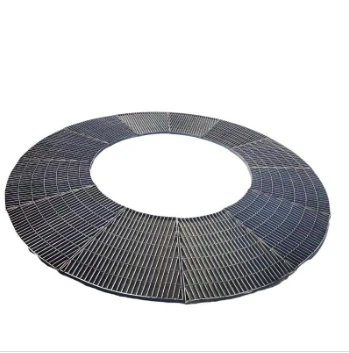Enhancing Road Safety with Effective Car Bollard Solutions
The Importance and Functionality of Car Bollards
Car bollards have become a crucial element in urban design and infrastructure, serving as both practical barriers and aesthetic enhancements in various settings. These sturdy posts can be found in a multitude of environments including city streets, shopping centers, parks, and pedestrian plazas. Their primary purpose is to protect pedestrians, property, and infrastructure from vehicular encroachments, but their utility extends far beyond mere physical barriers.
Understanding Car Bollards
Bollards are typically short, sturdy vertical posts, which can be constructed from a variety of materials including steel, concrete, plastic, and aluminum. They can be fixed, removable, or even collapsible, depending on the specific needs of the area they are installed in. The design and functionality of bollards can vary greatly, with some being designed purely for aesthetic appeal while others are engineered to withstand significant force, such as impacts from vehicles.
Safety and Security
One of the primary motivations for installing car bollards is to enhance safety
. In busy urban environments, the risk of vehicles unintentionally straying into pedestrian zones is a genuine concern. Bollards serve to delineate spaces, ensuring that pedestrian areas remain safe for foot traffic. In locations where crowds gather—such as restaurants with outdoor seating, festival areas, or public squares—bollards act as a protective barrier, minimizing the potential for accidents.Additionally, in recent years, the use of bollards as a security measure has gained traction, particularly in the wake of increased vehicle-related attacks in public spaces. High-impact bollards can be strategically placed to form protective perimeters around vulnerable areas, effectively reducing the risk of such incidents. Cities around the globe are investing in fortified bollard systems that comply with security standards, providing peace of mind for residents and visitors alike.
Facilitating Urban Design
car bollards

Beyond their functional attributes, car bollards contribute significantly to urban design. They can enhance the visual appeal of public spaces through thoughtful design and strategic placement. Customizable bollards can be integrated into the aesthetic theme of a neighborhood, featuring unique colors, patterns, and materials that reflect local character and culture.
Furthermore, bollards can play a role in traffic management. By guiding vehicular movement, they can help to direct cars to designated lanes or parking areas while preventing access to restricted zones. This not only helps in streamlining traffic flow but also reduces the likelihood of congestion in busy urban locales.
Versatility and Multi-functionality
The versatility of car bollards is one of their standout features. While their primary function is to provide safety and security, they can also serve secondary purposes. Many modern bollards are equipped with lighting systems to enhance visibility at night, improving safety further and contributing to the ambiance of a space. Some bollards are even designed with features that allow for the installation of bike locks, signage, or waste disposal units, maximizing their utility.
Additionally, with the rise of intelligent city technologies, smart bollards equipped with sensors and connectivity features may also contribute to urban monitoring systems, providing data related to traffic patterns, environmental conditions, and pedestrian movement.
Conclusion
Car bollards are far more than simple barriers; they represent a multi-faceted solution to several urban challenges including safety, aesthetics, traffic management, and environmental monitoring. As cities continue to evolve and adapt to the needs of their populations, the role of car bollards is likely to expand even further. Whether serving a protective function or enhancing the design of public spaces, these humble posts play an indispensable role in creating safe, welcoming urban environments for everyone.
-
Square Sewer Cover Enhances Urban SafetyNewsAug.01,2025
-
Pipe Fitting Requires Precise AlignmentNewsAug.01,2025
-
Manhole Step Is DurableNewsAug.01,2025
-
Manhole Cover Is Found WorldwideNewsAug.01,2025
-
Hole Cover Frame On RoadsNewsAug.01,2025
-
Gully Grate Improves Road SafetyNewsAug.01,2025
-
Man Hole Cover Round Load CapacityNewsJul.31,2025
